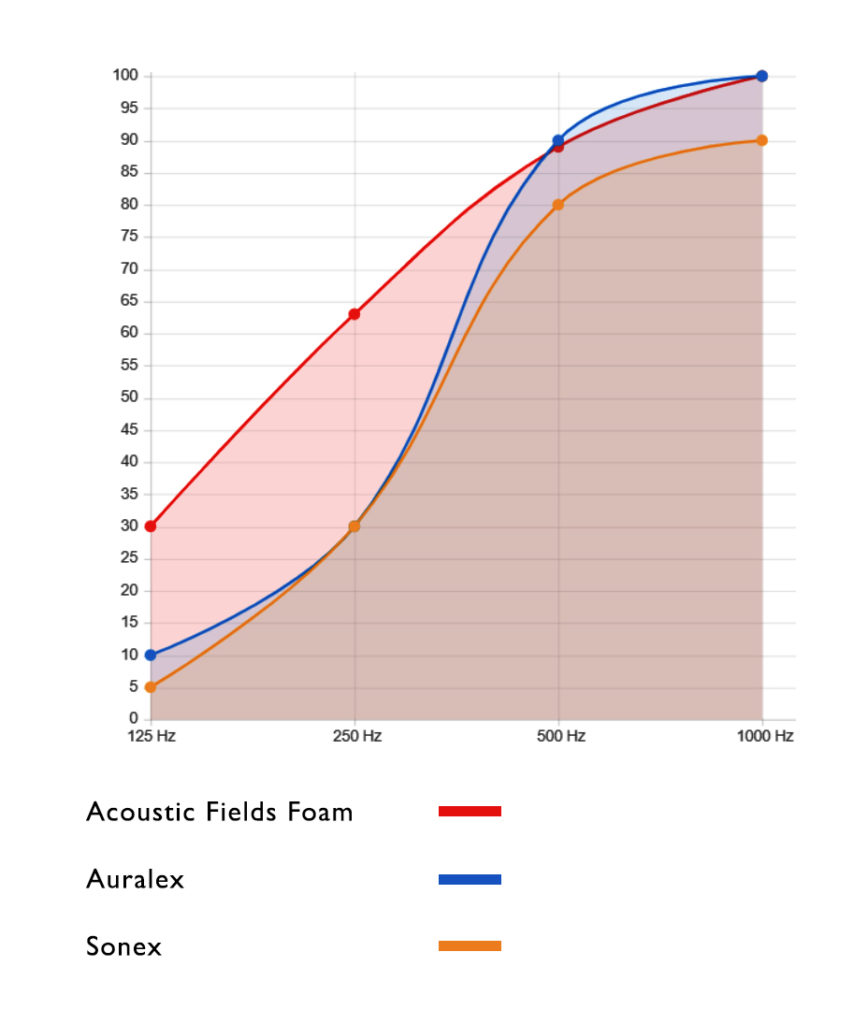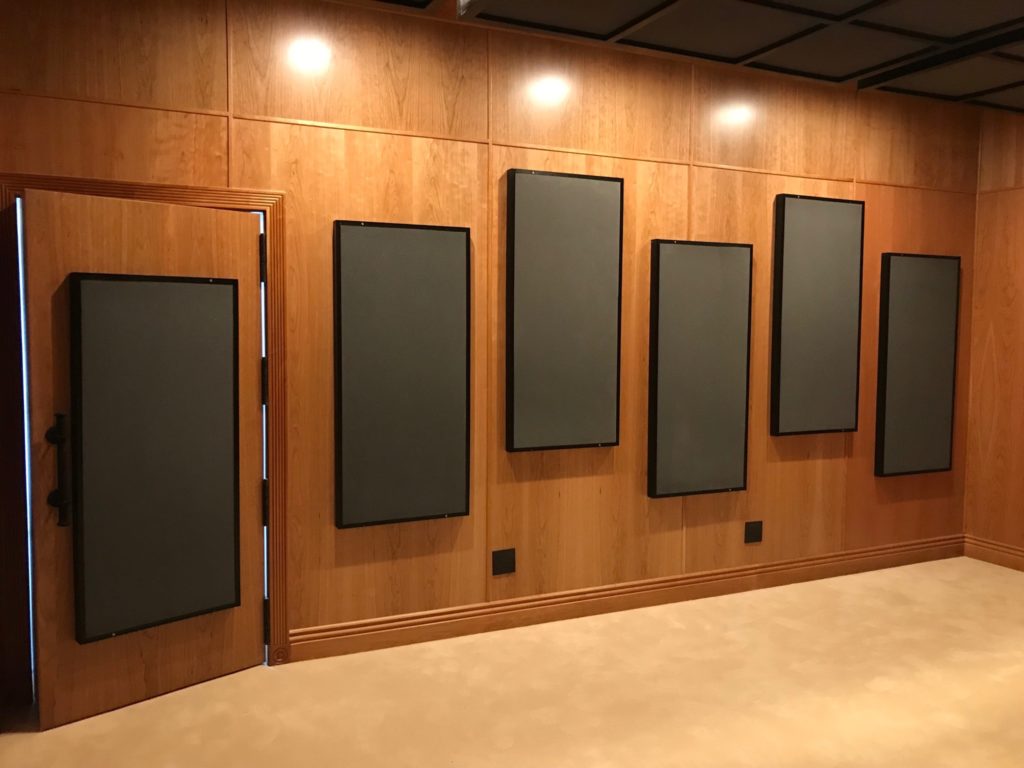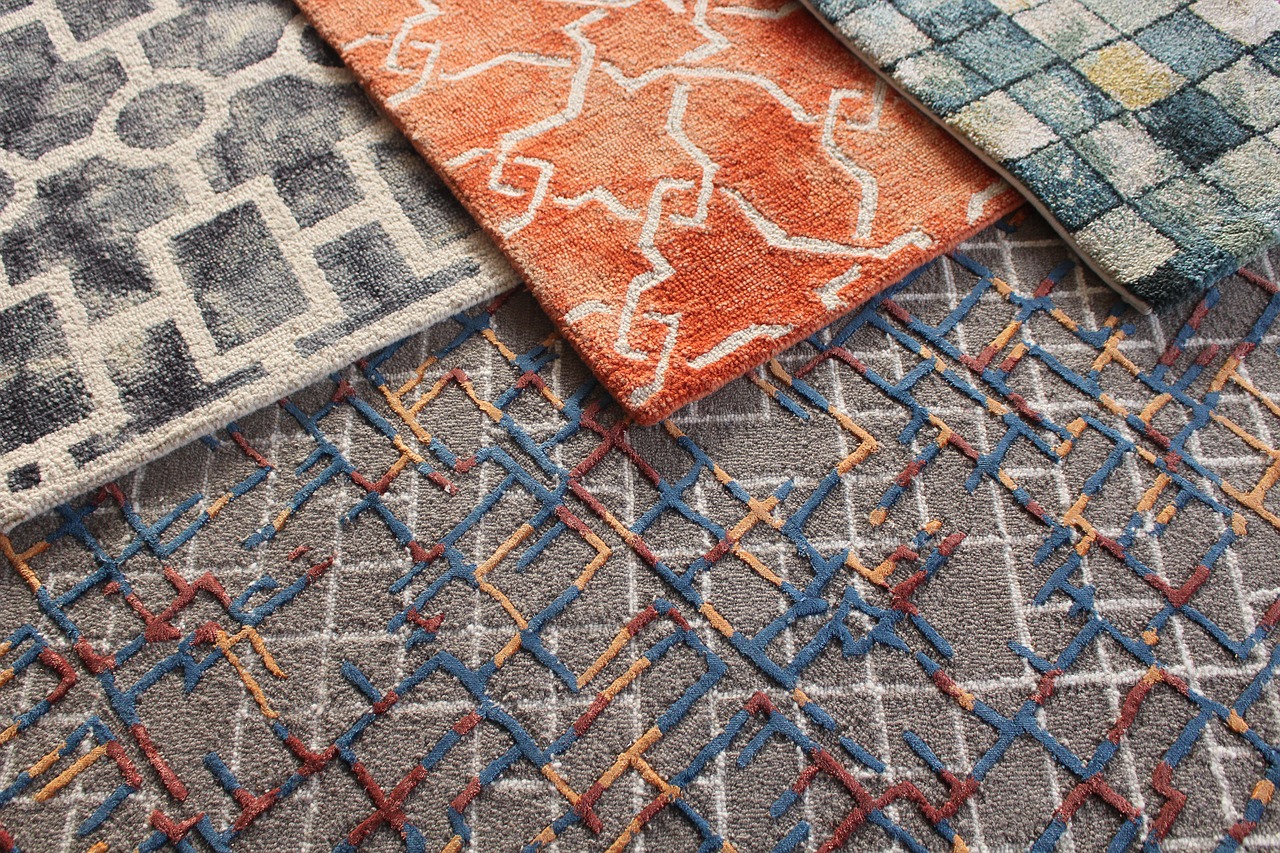Last week I was asked “Can carpet be used as an acoustic treatment?” especially with regard to the brightness of the recordings this YouTube subscriber sent in. Carpet can be used as a sound-absorbing technology. It is more suitable for absorbing excess noise than it is an absorber of music and voice. The goal of noise absorption technology is to absorb as much energy (noise) per square foot as you can. You want a low level and a high rate of absorption. With music and voice, you also want a low level but your rate has to be gradual and linear. This blog updated on 11/27/19 to reflect new discoveries.
Open-Celled Foam
A much better sound absorption treatment to use is open-celled foam. It is lightweight inexpensive and can perform well for both noise and music and voice. Open-celled foam can be designed to absorb as much energy per square foot as it can for noise usage. It can also be designed to better absorb music and voice. Our Studio – Pro Foam was designed for music and voice only, no noise. Notice the smooth absorption curves from 125 – 250 Hz. This is the key to getting a music and voice sound-absorbing technology that is truly accurate.

Performance Comparison of Acoustic Fields Foam
What About Carpet?
Is the carpet a good idea? It’s a better idea than nothing. As far as being a good idea I don’t like it because it doesn’t have the necessary rates and levels to deal with music. Sound in general? Sure, put carpet in your living room, that’s okay so that when your TV or video stuff is playing in the room you don’t have high reverberation times. But I don’t like a carpet for music because music is a controlled frequency response. There are different measurement variables to use for sound absorption with music and voice versus noise.
Studio Pro Foam: https://www.acousticfields.com/product/acoustic-foam/
Determine the Frequency and Amplitude of the Problem
The higher frequency issues, the brightness he talks about can be treated. If it’s really bright, these are subjective terms so without looking at the room response curve it’s difficult to say. But let’s just deal with the subjective part. Bright is not wanted because our digital music today is bright by definition so that’s the last thing that we want. We need to identify the frequency and amplitude of the problems and then assign the correct type, amount, and position (TAP). Let’s stay away from subjective terms such as “live” or “wet”.
Sound Absorbing Ceiling: https://www.acousticfields.com/product/suspended-ceiling-foam-tile/
Music and Voice are Different
You know we have the 20 to 20,000 Hz. so you know that’s our range and carpet’s good for walking on but I don’t like it for room acoustic treatment because I don’t know its rate and levels of absorption. Music and voice are different than noise. We communicate as beings with each other using voice. Changes in volume or amplitude, tonal inflections and even pauses in the “audio” spoken track are a form of communication within the voice. We have fundamentals and harmonics in the voice. Most of the time it is the harmonic that holds the ability to express our feelings through voice. All of these variables must be respected in treating voice.

Acoustic Fields Foam Panel Technology
Carpet Can Be Used
Carpet has a benefit because it can cover a large surface area. This is a good quality to have if you are chasing high reverberation times within a room. High reverberation times are caused by too many reflections coming from the walls, floor, and ceiling. When you add the reflections from all six surface areas, you get reverberation. Reverberation is room distortion. It clouds voice and music. It is room noise. Carpet sound absorption can benefit this situation. However, you must choose a sound-absorbing carpet that really is a sound-absorbing carpet. It must be thicker than a commercial carpet. It should have a pad and even another layer of material. Multiple layers are best for sound absorbing carpet.
In Summary
I hope today’s discussion helps solve the problem you are having. Please message me at info@acousticfields.com if you have any questions as I am always happy to help. If you want more to learn more about room acoustics please sign up for our free acoustic video training series and ebook. Upon sign up you will instantly have access to a series of videos and training to help improve the sound in your studio, listening room or home theatre.








Hello. This article mentions choosing a sound absorbing carpet and a pad. Could you please give examples of products? I can’t find products designed for these purposes. I moved into a new home and I’m slowly remodeling a room for music. Thanks.
Use whatever floor type suits your usage. Carpet should have a carpet pad under the carpet. Hardwood floors should have area rugs.